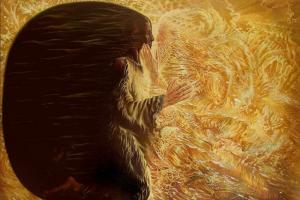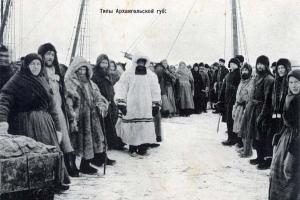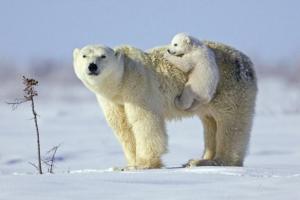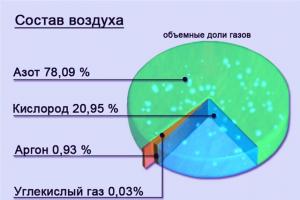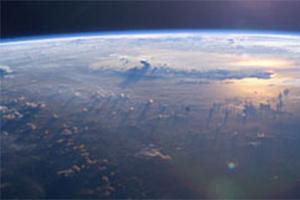In December 2010, after a half-century ban, polar bear hunting is going to be opened in Chukotka. This move could push the polar bear to the brink of extinction.
In June 2010, at the last meeting of the joint Russian-American commission on polar bears in Anchorage (USA, Alaska), it was decided to allocate a quota for the indigenous residents of Chukotka to hunt polar bears. This decision could be fatal for the conservation of this species.

Scientists fear that the opening of hunting, coupled with factors such as shrinking ice cover in the Arctic and uncontrolled poaching, will lead to the fact that the polar bear may soon be on the verge of complete extinction. 
Information received in the media that the indigenous people of Chukotka will receive the legal right to hunt has noticeably excited fans of legal poaching. On the websites of a number of “elite” travel agencies there were

Advertisements about organizing polar bear hunting tours are appearing more and more often. Officially, hunting for this polar predator has not been carried out in the Russian Arctic since 1956. However, over the past 20 years, it is estimated that between 70 and 300 individuals have been illegally killed in Russia annually.

Over the past 10 years, due to the ongoing reduction of Arctic ice cover and the increasing anthropogenic pressure of poaching, most polar bear populations have found themselves in a depressed state. According to various estimates by scientists, in the next 50 years the global polar bear population may decline by 30-50%, and in the Russian Arctic, the threat of their extinction is highest.

In 2009, the international group of specialists of the International Union for Conservation of Nature (IUCN) on polar bears adopted a special resolution on the catastrophic state of the population

Despite the real threat of a significant reduction in the Chukotka polar bear population to the point of its complete extinction, there is a fairly influential lobby in Russia that is seeking the immediate opening of polar bear hunting in the Chukotka Autonomous Okrug under the pretext of satisfying the traditional and cultural needs of the region’s indigenous inhabitants. In reality, the opening of hunting is needed by those who are interested in receiving commercial income from the sale of bear skins and organizing trophy hunts, and by those who earn political capital from lobbying for the opening of hunting, protecting the supposed “interests of indigenous peoples.”

However, arguments that the opening of polar bear hunting in Chukotka is necessary to preserve the traditional culture of indigenous peoples are far-fetched. According to the cultural and ethnic traditions of the indigenous inhabitants of the region, the polar bear has never been the object of systematic hunting here for subsistence purposes, unlike seals, walruses or whales.

Polar bear hunting is unacceptable, especially now when the world population is under the stress of global climate change. The polar bear is a national resource and the pride of Russia. The preservation and restoration of the Chukotka population is in the interests of all Russians, including the long-term interests of the indigenous inhabitants of Chukotka!

We should be ashamed. That's why I've been taking part in the program for three years now.
Why does Alaska, Canada, protect its own, but we want to organize a hunt here.
It’s already bad for them due to the fact that they live in isolated places, have a narrow diet, they have no enemies, so they believe the person. Sometimes they come to visit))

For a polar bear, the world is limited by ice fields, and this primarily determines the characteristics of its behavior. Judging by animals kept in captivity, this bear, compared to the brown one, seems less intelligent and not so dexterous; he is less trainable, more dangerous and excitable, and therefore can be seen relatively rarely in the circus arena. True, he is characterized by a certain “straightforwardness” in his actions, due to a rather monotonous lifestyle, narrow food specialization, and the absence of enemies and competitors. But it is enough to observe this animal in a natural environment for even a short time to be convinced of the high level of its psyche, its exceptional ability to assess the conditions of the natural environment, including the quality of ice, adapt to them and, depending on them, flexibly change hunting tactics, find the easiest and passable paths among piles of hummocks, confidently move along young, fragile ice fields or areas of ice replete with cracks and leads. The strength of this beast is amazing. He is capable of dragging and lifting up a slope a walrus carcass weighing over half a ton, with one blow of his paw he can kill a large sea hare that has almost the same mass as his, and, if necessary, he can easily carry it in his teeth for a considerable distance (a kilometer or more).

and we also live here according to Moscow time, because the poles change, the step left and right is 12 hours or more, the difference with Moscow
I kiss you all. And thank you for your warmth, understanding and sorry for the long post.
The predatory mammal polar bear, or polar bear (Ursus maritimus) is a close relative of the brown bear and the largest land predator on the planet today.
Characteristics and description
The polar bear is one of the largest terrestrial representatives of mammals from the order of predatory animals.. The body length of an adult individual is three meters and weighs up to a ton. The average weight of a male, as a rule, varies between 400-800 kg with a body length of 2.0-2.5 m. The height at the withers does not exceed one and a half meters. Females are much smaller, and their weight rarely exceeds 200-250 kg. The category of the smallest polar bears includes individuals inhabiting Spitsbergen, and the largest specimens are found near the Bering Sea.
This is interesting! A characteristic feature of polar bears is the presence of a fairly long neck and a flat head. The skin is black, and the color of the fur coat can vary from white to yellowish shades. In summer, the animal's fur turns yellow as a result of prolonged exposure to sunlight.
The fur of polar bears is completely devoid of pigmentation, and the hairs have a hollow structure. A feature of translucent hairs is the ability to transmit only ultraviolet light, which gives the wool high thermal insulation characteristics. There is also fur on the soles of the limbs to prevent slipping. Between the fingers there is a swimming membrane. Large claws allow the predator to hold even very strong and large prey.
Extinct subspecies
A closely related subspecies to the well-known and fairly common polar bear today is the extinct giant polar bear or U. maritimus tyrannus. A distinctive feature of this subspecies was its significantly larger body size. The body length of an adult individual could be four meters, and the average weight exceeded a ton.

On the territory of Great Britain, in Pleistocene deposits, it was possible to discover the remains of a single ulna belonging to a giant polar bear, which made it possible to determine its intermediate position. Apparently, the large predator was perfectly adapted to hunting fairly large mammals. According to scientists, the most likely reason for the extinction of the subspecies was an insufficient amount of food at the end of the glaciation period.
Habitat
The circumpolar habitat of the polar bear is limited to the northern coast of the continents and the southern part of the distribution of floating ice, as well as the border of the northern warm currents of the sea. The distribution area includes four areas:
- permanent habitat;
- habitat of high animal numbers;
- place of regular residence of pregnant females;
- territory of distant calls to the south.
Polar bears inhabit the entire coast of Greenland, the ice of the Greenland Sea south to the islands of Jan Mayen, the island of Spitsbergen, as well as Franz Josef Land and Novaya Zemlya in the Barents Sea, the islands of Bear, Vaigach and Kolguev, and the Kara Sea. A significant number of polar bears are observed on the coast of the continents of the Laptev Sea, as well as the East Siberian, Chukchi and Beaufort Seas. The main habitat of the highest possible abundance of the predator is represented by the continental slope of the Arctic Ocean.

Pregnant female polar bears regularly den in the following areas:
- northwest and northeast Greenland;
- southeastern part of Spitsbergen;
- western part of Franz Josef Land;
- the northern part of the island of Novaya Zemlya;
- small islands of the Kara Sea;
- Severnaya Zemlya;
- northern and northeastern coast of the Taimyr Peninsula;
- the Lena delta and the Bear Islands of Eastern Siberia;
- coast and adjacent islands of the Chukotka Peninsula;
- Wrangel Island;
- southern Banks Island;
- Simpson Peninsula coast;
- northeastern coast of Baffin Island and Southampton Island.

Dens with pregnant polar bears have also been observed on pack ice in the Beaufort Sea. From time to time, usually in early spring, polar bears make long trips towards Iceland and Scandinavia, as well as the Kanin Peninsula, the Anadyr Bay and Kamchatka. With ice and when crossing Kamchatka, predatory animals sometimes end up in the Sea of Japan and Okhotsk.
Nutritional Features
Polar bears have a very well developed sense of smell, as well as hearing and vision, so it is not difficult for a predator to notice its prey at a distance of several kilometers.
The diet of a polar bear is determined by the characteristics of its distribution area and the characteristics of its body. The predator is ideally adapted to the harsh polar winter and long swims in icy water, so its prey most often becomes marine representatives of the animal world, including sea urchins and walruses. Eggs, chicks, young animals, as well as carrion in the form of corpses of sea animals and fish that are washed up on the coast are also used for food.

If possible, the polar bear's diet can be very selective. In captured seals or walruses, the predator primarily eats the skin and fat layer. However, a very hungry beast is capable of eating the corpses of its fellows. It is relatively rare for large predators to enrich their diet with berries and moss. Changing climatic conditions have had a significant impact on nutrition, so recently polar bears are increasingly hunting on land.
Lifestyle
Polar bears make seasonal migrations, which are caused by annual changes in the territories and boundaries of polar ice. In summer, animals retreat towards the pole, and in winter, the animal population moves to the southern part and enters the mainland.
This is interesting! Despite the fact that polar bears mainly stay on the coast or ice, in winter the animals lie down in dens located on the mainland or island part, sometimes at a distance of fifty meters from the sea line.
The duration of winter hibernation for a polar bear, as a rule, varies between 50-80 days, but most often pregnant females hibernate. Males and young animals are characterized by irregular and fairly short winter hibernation.

On land, this predator is fast, and also swims well and dives very well.
Despite the apparent slowness, the slowness of the polar bear is deceptive. On land, this predator is distinguished by its agility and speed, and among other things, the large animal swims well and dives very well. To protect the polar bear's body, it has very thick and dense fur, which prevents it from getting wet in icy water and has excellent heat-retaining properties. One of the most important adaptive characteristics is the presence of a massive layer of subcutaneous fat, the thickness of which can reach 8-10 cm. The white color of the coat helps the predator to successfully camouflage itself against the background of snow and ice..
Reproduction
Based on numerous observations, the rutting period for polar bears lasts about a month and usually begins in mid-March. At this time, predators are divided into pairs, but there are also females accompanied by several males at once. The mating period lasts a couple of weeks.
Polar bear pregnancy

Lasts approximately eight months, but depending on a number of conditions, can vary between 195-262 days. It is almost impossible to visually distinguish a pregnant female from an unmarried polar bear. About a couple of months before giving birth, behavioral differences appear and females become irritable, inactive, lie on their stomachs for a long time and lose their appetite. A litter often contains a pair of cubs, and the birth of one cub is typical for young, primiparous females. A pregnant bear comes to land in the fall, and spends the entire winter period in a snowy den, most often located near the sea coast.
Caring for cubs
In the first days after birth, the polar bear lies curled up on her side almost all the time.. Short and sparse hair is not sufficient for independent heating, so newborn cubs are located between the mother’s paws and her chest, and the polar bear warms them with her breath. The average weight of newborn cubs most often does not exceed a kilogram with a body length of a quarter of a meter.

The cubs are born blind, and only at the age of five weeks do they open their eyes. A mother bear feeds her month-old cubs while sitting. The mass emergence of female bears occurs in March. Through a hole dug outside, the bear begins to gradually take her cubs out for a walk, but with the onset of night the animals return to the den again. During walks, the cubs play and dig in the snow.
This is interesting! In the polar bear population, approximately 15-29% of cubs and about 4-15% of immature individuals die.
Enemies in nature
In natural conditions, polar bears, due to their size and predatory instinct, have practically no enemies. The death of polar bears is most often caused by accidental injuries as a result of intraspecific clashes or when hunting walruses that are too large. Orca whales and polar sharks also pose a certain danger to adults and young individuals. Most often bears die from starvation.

Man was the most terrible enemy of the polar bear, and such peoples of the North as the Chukchi, Nenets and Eskimos hunted this polar predator from time immemorial. Fishing operations that began in the second half of the last century became disastrous for the population. During one season, St. John's worts destroyed more than a hundred individuals. More than sixty years ago, polar bear hunting was closed, and since 1965 it has been included in the Red Book.
Danger to humans
Cases of polar bear attacks on people are well known, and the most striking evidence of the predator’s aggression is recorded in the notes and reports of polar travelers, so you need to move around in places where a polar bear may appear, you need to be extremely careful. In populated areas located near the habitat of the polar predator, all containers with household waste must be inaccessible to the hungry animal. In the cities of the Canadian province, so-called “prisons” have been specially created in which bears approaching the city limits are temporarily kept.
In twenty years they may no longer exist in the polar regions, according to scientists, and in 30 years they will also disappear from zoos. Over the past three decades, the number of white polar bears in the Russian reserve in the Chukchi Sea has decreased from 4,000 individuals to 1,700. Currently, their numbers are even lower. According to the international organization for saving biologically endangered species in 2008, there were about 20-25,000 polar bears worldwide. Due to a sharp decline in the population, the polar bear ended up in the Red Book of Endangered Species. Why are they disappearing? There are several possible reasons. The ice edge and sea ice in the Arctic Ocean are where the polar bear gets its food. They hunt seals through holes in the ice and on the ice. The ice is gone! Also, their favorite food - seals - is disappearing. Because the ice melts and crumbles earlier, bears and their cubs often remain lost on large ice blocks and are unable to reach shore for summer hunting and their natural habitat. The polar bear lives in the Arctic, from Alaska through Canada and Greenland, Spitsbergen and east into Russia. There are no bears around the North Pole due to the thickness of the ice and the lack of seals as food for hunting. Due to the lack of food in the uninhabited northern regions, bears seek food in populated areas. This is becoming a problem for the northern regions and many of them are being shot. Since June this year, the North Pole has been losing 100,000 square kilometers of ice every day, which is the size of Iceland - every day.
What to do? Let's think about it!
The white, or polar, bear is a powerful and beautiful animal, a true symbol of the Arctic. However, the indigenous inhabitants of the North were under threat. The number of polar bears in the Arctic has decreased significantly in recent years. Scientists say that in half a century they may not remain on our planet at all. In 2008, the polar bear was declared an endangered species and was listed in the Red Book.
Why is the number of polar bears decreasing?
Zoological scientists give several reasons for the decline in the polar bear population. Among them, natural and anthropogenic factors can be distinguished.
One of the main reasons why the number of polar bears is decreasing can be considered climate warming and the associated reduction in the area of polar ice. And this greatly affects the life of the polar bear, since this animal lives by hunting seals. Over the past 30 years, the ice area in the Arctic Ocean has decreased to 5.02 million square meters. km versus an average of more than 7 million sq. km.
Climate warming
Led to warming of water in the southern part of the Arctic Ocean. Some cold-loving fish (for example, polar cod) moved to more northern areas. And behind them, the population of ringed seals, which the polar bear hunts, also moved. Some of the bears went north to get seals, and the rest are experiencing great difficulties with food. As a result, bears begin to eat food that is not typical for them - bird eggs, lemmings, berries.
Starving animals are increasingly coming to human habitation. In search of food, they scour garbage dumps and landfills and pose a danger to humans. Such animals are shot, which also explains why the number of polar bears is decreasing.
Also, when eating food waste, they often swallow such dangerous things as plastic film, nylon nets for food, pieces of glass, and are poisoned by household chemical residues.
Lifestyle
This powerful and dexterous animal leads a wandering lifestyle. In the spring, when the ice begins to melt, polar bears move north. Moving from ice floe to ice floe, they make long journeys. They dive into icy water while hunting or to move to another ice floe.

Climate warming has caused the ice that forms to become thinner and less durable. It breaks and crumbles more easily upon impact. Therefore, polar bears have to swim longer distances than before. This is due to a huge waste of energy, which means that more food is required for recovery. The cubs may simply not be able to cope with such a journey and drown.
Due to the changed ice conditions, many female bears do not have time to return to land to procreate. Increasingly, they are forced to dig birth dens directly on the ice floe, which increases the risk of death for both the babies and the bear herself. After all, the appearance of cubs and feeding them takes a lot of energy from her, and she cannot leave the den to hunt until the cubs are able to follow her.
Hunting

Another reason why the number of polar bears is decreasing is poaching. While they were the object of hunting only for a few in the North, this was not noticeable. But when bears began to be hunted with modern weapons, using helicopters, the number of animals shot increased sharply. Entire tours were organized to hunt polar bears. And the skin of the killed Arctic predator was then proudly shown to the guests.
Now the polar bear is protected, but this is not an obstacle for poachers.
Diseases
There is no doubt that polar bears need protection. Otherwise, our grandchildren may never know about a strong and amazingly beautiful beast, an Arctic nomad who lived in the harsh North.
Bears are one of the most ancient animals on Earth. Their first ancestor appeared about 22 million years ago. Today there are eight known species of bears, and one of them is white. This blond is the largest predator on the planet and, according to scientists, one of the smartest mammals. Prostozoo has compiled a portrait of a white giant that has adapted to life in the coldest corners of the planet.Scientists have found that sea bears, which is their scientific name, descended from brown bears that adapted to the harsh conditions of the Arctic. Today, polar bears can be found in the Arctic, northern Russia, Canada, the USA, Greenland and Norway. It used to be believed that polar bears are nomads, but this is not true. It's just that bears have a huge habitat and hunting area - up to 200 square meters. km.
Polar bears are real giants and are considered the largest land predators for good reason. The height of a male, if he stands on his hind legs, can reach 3 m, and the giants can weigh up to 700 kg. Ladies are half the size of their gentlemen and rarely grow more than 2 m; plump women weighing more than 300 kg are even rarer among them.
“Yes, the biggest one... Any questions?”
Source: http://supercoolpics.com
Polar bears are not actually white. Their hairs are transparent in color and have a thick, hollow core. This structure of the fur allows it to work as an ideal system for collecting and storing solar energy, thanks to which bears feel great in sub-zero temperatures. And the skin of bears, by the way, is black.
When moving to a warmer climate, the fur of the northerner may acquire a bluish or greenish tint due to bacteria and microorganisms that multiply in the cavities of the hairs.
“We are not white, we are transparent! Oh, woe is me!
Source: http://www.tepid.ru
Popular wisdom says: you can’t get away with it! But the polar bears refute it and come out of the water unscathed. This option is available to them thanks to their very oily fur, which repels water and prevents them from getting wet.
Polar bears are notoriously clean. If the fur is dirty, they will not move until they clean themselves up. Daily hygiene procedures take 30-40 minutes.
The polar bear is one of the best swimmers among land animals. Some scientists even classify it as a marine mammal. In one dive, the bear is able to cover a distance of 100 km. In water, it reaches speeds of up to 10 km per hour, for comparison, the maximum speed of Olympic swimmers is 6-7 km per hour. It is interesting that when swimming, the bear rows only with its front paws, while its hind paws act as a rudder.
The bear's paws are ideal oars; they are perfectly adapted for swimming: much wider than those of other representatives of the bear family and with webbed toes. On land, the miracle paws prevent you from falling into the snow, and thanks to its long claws, the bear does not slip on ice.
Miracle paws, close-up
Source: http://terramia.ru
Miracle Paws, background
Source: http://terramia.ru
"Come after me…"
Source: http://supercoolpics.com
Underwater plan
Source: http://lifestripes.ru
The polar bear is not inferior to penguins in high jumps. He can easily emerge from the water onto an ice floe 2.5 m high.
“Otherwise!”
Source: http://art-apple.ru
The bears' worst enemy is not cold, but heat, and they fear overheating much more than hypothermia. Polar explorers can overheat even at sub-zero temperatures, so they prefer slow promenades to fast jogging and spend a lot of time resting. The bears walk slowly, but if necessary they can take off at a speed of 40 km per hour.
Polar bears are very emotional: after an unsuccessful hunt, they can flare up and scatter huge pieces of ice around them. Pieces of ice are not the only thing they throw from time to time: polar explorers are real strongmen and can throw 90 kg of seals into the air.
Polar bears are meat eaters. The basis of their diet: fish, seals, fur seals, less often they hunt birds.
Snack
Source: http://fotodes.ru
The polar explorer has a keen sense of smell; his nose is able to detect a seal through a layer of snow and ice 1.5 m thick and at a distance of up to 32 km.
Despite the fact that the polar bear is a renowned hunter, only in 2% of hunts does it return with prey.
The stomach of a successful hunter can store up to 70 kg of fat, which nourishes it during long treks in the ice and turns into subcutaneous fat. Thanks to this, the bear can go hungry for several months even in the most severe frosts.
Polar bears cannot be called sleepyheads; they do not know what hibernation is. This is not surprising, because given the climate in their habitat, hibernation would become a permanent state. Only a pregnant female can afford to hide in a den and fall asleep for three months before giving birth.
When polar bears sleep, in order to retain heat, they cover their nose and eyes with their paws, because these are the only organs that emit it.
Polar bears spend most of their lives alone. And only the instinct of reproduction makes them go in search of a partner. The mating period for bears lasts from March to July, but the fertilized egg begins to develop in the female’s womb only in September.



